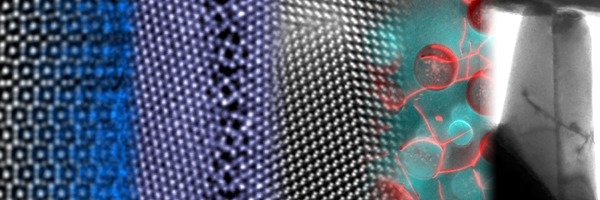
Tuning strength and ductility in single-phase, non-equimolar high entropy alloys
To reach this aim, we designed two non-equimolar FCC based HEAs with five principle elements Fe, Ni, Co, Cr and Mn. The Fe60Ni10Co10Cr10Mn10 (at. %, NT-HEA) HEA with high stacking fault energy (SFE) shows dislocation dominated deformation mechanisms, whereas in the Fe20Ni10Co10Cr10Mn50 (at. %, D-HEA) HEA with low SFE, twinning-induced plasticity is the major deformation mode. The impact of the Mn content on the stacking fault energy (SFE) was predicted by first-principles calculations and it was found that it decreases with decreasing Mn content (Fig. 2). The deformation microstructure of both alloys is investigated by electron backscatter diffraction and scanning transmission electron microscopy (STEM).
The deformation of D-HEA is dominated by microband and dislocation cell formation. The strong dislocation interaction at large strains provides high strength, while maintaining good ductility. The lower SFE in the NT-HEA promotes nano-twinning, which is beneficial for obtaining excellent ductility. Hence, by adjusting the Mn content in these single-phase FCC HEA, it is possible to tailor alloys with optimized strength and ductility, which is informed by ab-initio calculations to enable a computationally guided alloy design.
![Figure 1: Mechanical behavior of our HEAs compared to other engineering alloys[1]](/4405011/original-1598269128.jpg?t=eyJ3aWR0aCI6MTM3OCwib2JqX2lkIjo0NDA1MDExfQ%3D%3D--e1957bed9b251abd54a1c7e4f28cb7d479b1494a)
Figure 1: Mechanical behavior of our HEAs compared to other engineering alloys[1]
![Figure 2: Computed stacking fault energy and STEM images of deformed microstructures of the two HEAs[1].](/4405041/original-1598269128.jpg?t=eyJ3aWR0aCI6MTM3OCwib2JqX2lkIjo0NDA1MDQxfQ%3D%3D--8be1c24d9302342645d5c881d66489f3a92adc36)
Figure 2: Computed stacking fault energy and STEM images of deformed microstructures of the two HEAs[1].
![Figure 1: Mechanical behavior of our HEAs compared to other engineering alloys[1] Figure 1: Mechanical behavior of our HEAs compared to other engineering alloys[1]](/4405011/original-1598269128.jpg?t=eyJ3aWR0aCI6ODQ4LCJmaWxlX2V4dGVuc2lvbiI6ImpwZyIsIm9ial9pZCI6NDQwNTAxMX0%3D--3b999ce09459a4c8d30c8cac7a01c84e92f68abd)
![Figure 2: Computed stacking fault energy and STEM images of deformed microstructures of the two HEAs[1]. Figure 2: Computed stacking fault energy and STEM images of deformed microstructures of the two HEAs[1].](/4405041/original-1598269128.jpg?t=eyJ3aWR0aCI6ODQ4LCJmaWxlX2V4dGVuc2lvbiI6ImpwZyIsIm9ial9pZCI6NDQwNTA0MX0%3D--c3f1d0c03c9ede2df4db11bb9253eba0a2c88b97)